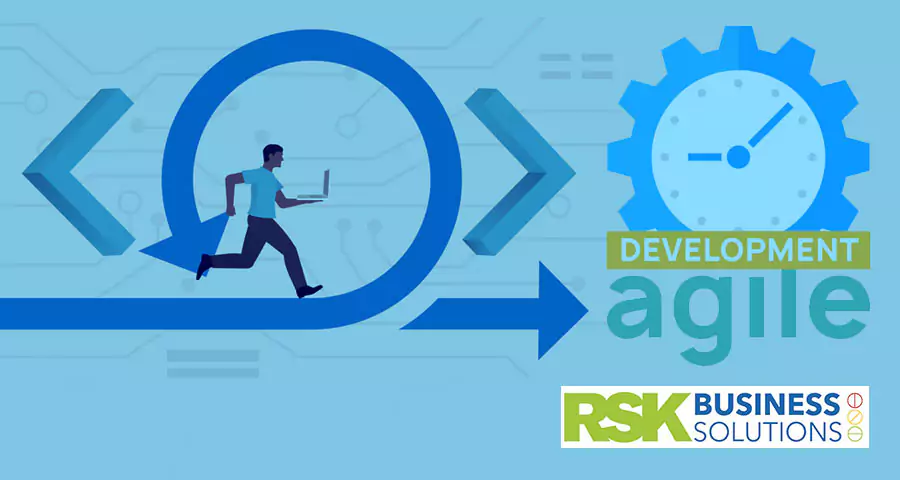
Agile is one of the most favoured software development techniques in use today. The application is simple, yet it can meaningfully improve everything from development to deployment. While agile software development is popular, applications have been used in a lot of non-software environments as well.
Related Articles

Pen Testing
RSK BSL Tech Team
April 14, 2025
|
|

Pen Testing
RSK BSL Tech Team
April 9, 2025
|
|

Pen Testing
RSK BSL Tech Team
April 7, 2025
|
|

Pen Testing
RSK BSL Tech Team
April 3, 2025
|
|

Pen Testing
RSK BSL Tech Team
March 31, 2025
|
|

Pen Testing
Praveen Joshi
March 27, 2025
|
|

Pen Testing
RSK BSL Tech Team
March 25, 2025
|
|

Pen Testing
RSK BSL Tech Team
March 20, 2025
|
|

Pen Testing
RSK BSL Tech Team
March 18, 2025
|
|

Pen Testing
RSK BSL Tech Team
March 10, 2025
|
|

Software Development
RSK BSL Tech Team
February 24, 2025
|
|

Pen Testing
RSK BSL Tech Team
February 19, 2025
|
|

Software Development
Praveen Joshi
February 11, 2025
|
|

insight
Praveen Joshi
January 31, 2025
|
|

AI Tech Solutions
Praveen Joshi
January 27, 2025
|
|

Software Development
Praveen Joshi
January 20, 2025
|
Agile software development with Scrum: What All you need to know
Agile is one of the most favoured software development techniques in use today. The application is simple, yet it can meaningfully improve everything from development to deployment. While agile software development is popular, applications have been used in a lot of non-software environments as well.
By itself, Agile represents a group of software development methodologies. It takes an iterative approach and presents incremental development. Each iteration consists of sprints that span two or four weeks, with the former being more common. Every sprint has a set goal from delivering a product to adding features.
Multiple teams can be involved in each sprint. The core of the process is its iterative nature and the ability to meet development goals. It is different as compared to conventional models that aim to deliver an entire project from start to finish in one iteration.
Agile will take multiple iterations to get the same job done. However, it focuses on delivering value and saving time. Changes in the requirements, feedback, and new features can be added with iterations, making the whole process more responsive.
When done right, agile makes the whole process more efficient and flexible. Both of these are properties that the world of software development values immensely.
Scrum and how it relates to Agile
Put simply; Scrum is a framework used with the process (agile) as a way to bring better results. The greatest strength in the pairing of agile and Scrum is that even complicated projects become more comfortable to handle. It is important to remember that the focus should remain on value and delivering projects.
There are three salient points to understand Scrum as a framework. It is:
- Lightweight
- Simple to understand
- Difficult to master
Notice these three points and take them to heart. While the rules and principles for agile and Scrum seem simple enough, they can be adamant to master. Though well-defined, agile as the process and Scrum as the framework are guardrails to the art of project management.
It is one of the reasons even major businesses hire expert agile software development UK. An experienced agile consultancy with results to show will have a better time handling agile and Scrum. The whole process and framework seem deceptively simple.
Overconfidence can be a monkey wrench in your agile software development efforts. If you don’t have an experienced manager to deploy agile methodologies, it is better to get consultants with the required skills.
Using Agile with Scrum for Software Development
Put together, agile and Scrum create a robust system for fast, flexible, and value-oriented software development. The system makes it easier to manage multiple teams, even if they are in diverse geographic locations.
The sprint-based model is especially useful. Each iteration presents an opportunity to include feedback from stakeholders into the development process. Additionally, the development process can also account for changing conditions and requirements.
It means that the client, or stakeholder, is happy and receives continuous updates. The project is more responsive and can take shape according to the requirements of the client. Developers also find this approach more attractive. Rather than receiving change requests on finished projects, they get quicker feedback and can adapt to new requirements with relative convenience.
The amount of time that could be possibly wasted with changes required from the development team dramatically reduces. With the possibility of non-productive work going down, the associated costs reduce as well.
It is worth noting that these listed above are the best-case scenarios. They are highly achievable, but should not be seen as absolutes. It is also a reason why hiring an outside agile consultant is often recommended. Agile and Scrum require precise and experienced execution for the best results.
A Better Understanding of Agile and Scrum
Remember that though they are used together, agile and Scrum are not the same. There are some essential variations that the Scrum Master or Product Owner must consider.
There are some exciting examples of the divergence of agile and Scrum. Agile values flexibility, while Scrum seems to be more interested in rigidity. Similarly, agile promotes simplicity, while Scrum is not afraid of experimenting and innovation.
Striking a balance between these seemingly divergent approaches is what makes them such a powerful duo. Some of the most significant advantages of bringing agile and Scrum together are:
- High Transparency: Regular meetings, updates, and data exchange mean that everyone involved in the project knows exactly what is going on. The common goal seems visible and attainable.
- Avoiding Time and Cost Overruns: Every software project runs the risk of going over-budget or blowing past the delivery date. One of the core objectives of agile nearshore software development services is to reduce the possibility of such occurrences. Each iterative cycle and sprint is designed in a way that brings project goals closer.
- Individual and Team Motivation: Teams and members have autonomy in working towards the allotted projects. Members can also keep track of the progress made within their team and the project in general. It serves as a great motivator that capitalizes on the members’ freedom of action, responsibility, and overall approach to the project.
The agile and Scrum model transitions as easily to simple projects. You could use agile software development to build a minimum viable product (MVP) over full and complex software. Agile and Scrum should only be used in projects where the requirements are precise. Vague requirements or extensive projects don’t work well with Scrum.
The beauty of agile and Scrum also partly lies in the various scenarios where they can be applied. You could employ these tactics for complex projects expected to take a very long time to complete. Iterative development can continue to build a new product or to maintain and service an existing product.
Praveen Joshi
Praveen is a seasoned IT Solutions Leader and Director at RSK Business Solutions, a technology-driven IT Consulting Company that specializes in Bespoke Software Development, Agile Consulting, Mobile App Development, Smart Sourcing, and much more. For the last 17 years, he has been delivering quality custom IT solutions that help businesses achieve their goals.

 Share
Share Post
Post Tweet
Tweet Copy
Copy


